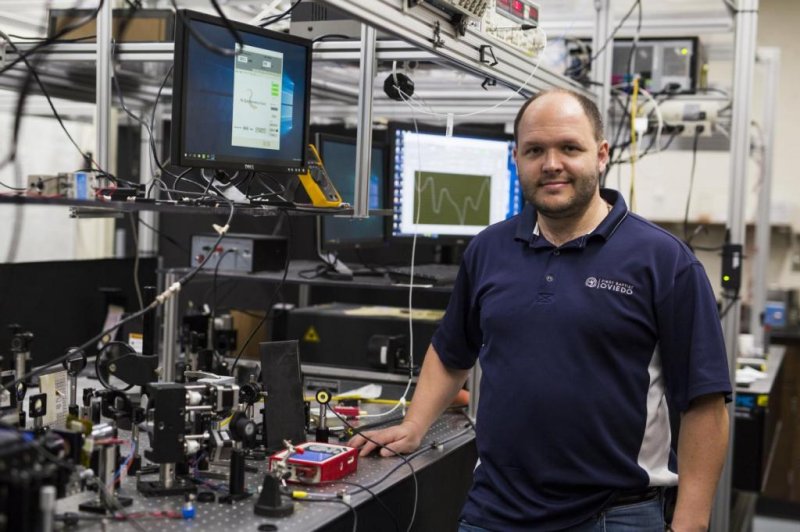Assistant Professor Shawn Putnam of the University of Central Florida's College of Engineering & Computer Science has developed a new technology that could make medical diagnosis faster. Photo courtesy University of Central Florida.
Jan. 20 (UPI) -- Researchers at the University of Central Florida have developed a nanotechnology that could lead to faster test results for infectious diseases like HIV or Lyme disease.
Shawn Putnam, an assistant professor in the University of Central Florida's College of Engineering & Computer Science, has merged nanoscience with a magnetic phenomenon called the Faraday rotation, which hasten the diagnosis of infectious diseases.
The Faraday rotation is the interaction of a magnetic field and light developed in 1845 by scientist Michael Faraday.
Putnam and his team coated nanoparticles with the bovine serum albumin, or BSA antibody, which is used in a variety of diagnostic tests.
Mixing the nanoparticles in a test solution, the BSA proteins bind with the antibodies that coat the nanoparticles.
The researchers developed a new way to measure the quantity of the proteins present by using nanonparticles with an iron core and added a magnetic field, which caused the particles to align in a particular order. The rotation of the particles slows down allowing for them to be more easily detected using laser optics.
The method could be used to create biochemical immunology test results in 15 minutes compared to the current time period of several hours.
"I see no reason why a variation of this technique couldn't be in every hospital throughout the world," Putnam said, in a press release. "It's an old theory, but no one has actually applied this aspect of it."
The study was published in the journal Small.















